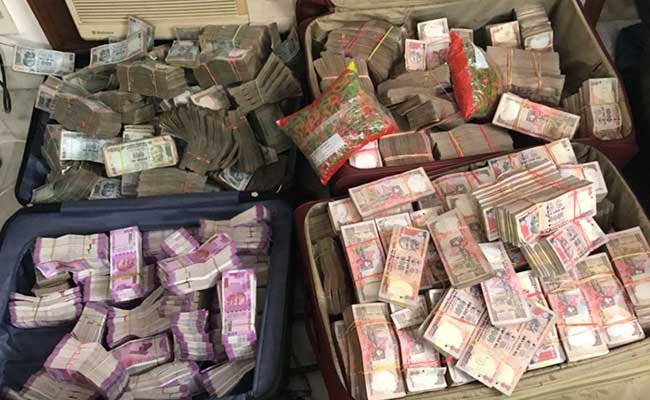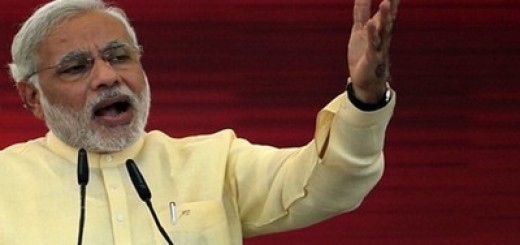The Indian economy in black and white

What is black money?
 John Cheeran in Times of India, May 26, 2017
John Cheeran in Times of India, May 26, 2017
(Note: All know that Black Money is something that disfigures and destroys the economy of a country like impure blood in a human body. But they know little about what the name really means. This article gives an insight.
Black money is known by more than 30 different names like: ‘parallel economy, informal economy to subterranean economy’, all detrimental to a healthy economy. It is in this context, one has to understand if demonetization was the right medicine applied by Modiji. Even experts are at a loss to give a convincing verdict on it. Then what can we expect ordinary people to react to it rationally and convincingly? All what ordinary people understand, is that black is bad and and white is good which is not a scientific explanation at all.
According to expert Arun Kumar Rs 93 lakh crore black money circulates in the Indian economy today. It was 62% of the GDP in 2012-13. Black economy is concentrated in the hands of a few—3% of the population. “Temples, churches and mosques are dumping yards of black money in the form of donations. People are willing to give what’s more than due to God but not ready to pay Caesar.” This is done to avoid paying taxes.
Only 1.2% of the 1.27 billion Indian population pays tax because tax rates are too high. According to our expert the triad of corrupt politicians, businessmen and the executive are responsible for black money. Until they change, Indian economy has little hope of rectifying itself. So the final question is: who will guard the guards? The  answer is: the voting power of the people. That means, government is your business. Vote for the honest politician only. That raises the finaly question: Where to find him? May be we are caught in a vicious circle. james kottoor, editor)
answer is: the voting power of the people. That means, government is your business. Vote for the honest politician only. That raises the finaly question: Where to find him? May be we are caught in a vicious circle. james kottoor, editor)
As he completes three years as India’s Prime Minister, one thing that Narendra Modi has successfully put on the nation’s agenda is the elimination of the black economy through his controversial November 8, 2016, demonetisation drive.
It remains to be seen if the RBI’s withdrawal of Rs 500 and Rs 1,000 notes had the desired impact but Modi has reaped huge political dividends winning the key state of Uttar Pradesh for his party, BJP.
Understanding the black economy is not an easy task as studies show that the phenomenon is referred to by more than thirty different names all over the world, ranging from black money, parallel economy, informal economy to subterranean economy.
There is little doubt that the black economy is bad for the economy. But how to size the black economy and then cut it down to size is a really complex task that confounds experts and economists, leave alone the lay reader.
And publisher David Davidar and Aleph deserve fulsome praise for coming up with a neat little book to demystify the subject, written lucidly by well-known development economist Arun Kumar, titled Understanding The Black Economy and Black Money In India (Pages 144, Price Rs 399). This is a must-read for anyone keen to figure out the challenges that India faces at this critical juncture.
Arun Kumar is the country’s leading authority on the black economy and has studied, written about and lectured extensively on the phenomenon for nearly four decades. He provocatively argues that the problem begins with the definition of the black economy. Even the term ‘black economy’ is racially loaded and inappropriate. It implies that black is bad while white is good.
He has estimated that the figure of black money in 2012-2013 is 62% of GDP. Assuming that it has remained the same for 2016-17, he calculates that black money in the Indian economy is Rs 93 lakh crore.
But the key thing to remember – which Arun Kumar readily concedes – is that there is a lack of clear picture about the size of the economy as gathering of data is inaccurate. He admits that surveys throw up bad data because people are trying to mislead the authorities for their own benefit.
This figure – Rs 93 lakh crore – may be contested but there is no quarrel about the deleterious effects of the black economy. It weakens democracy. It prevents the state from delivering its infrastructural promises. It is the cause of macroeconomic problems like fiscal crises, inflation and balance of payment (BOP) difficulties.
Micro problems and sectoral problems of the economy, like poor and inadequate education, health and infrastructure are also linked to the black economy. It raises costs everywhere.
The black economy involves all of us, whether you would like to admit or not. Take this. Why do the coffers of religious establishments in India always overflow? Temples, churches and mosques are dumping yards of black money in the form of donations. People are willing to give what’s more than due to God but not ready to pay Caesar.
When you make a donation to a religious establishment, you are not asked to reveal the source of your income. It is not the Ambanis and the Mallyas alone who make such donations but millions of ordinary middle class Indians shower their tax-evaded income to propitiate the Gods.
Only 1.2% of the 1.27 billion Indian population pays tax. Is it because the tax rates are too high? Or the non-tax paying population too poor to pay taxes? Yes, as Arun Kumar tells us, the black economy is concentrated in the hands of a few—3% of the population in 1995—but there are millions who should be paying the tax than a mere 3% that holds black money.
It is not the elite alone responsible for the generation and perpetuation of black money, although Arun Kumar puts the blame largely on the triad of corrupt politicians, businessmen and the executive.
Although at times he sounds gloomy in how to bring about the change, Arun Kumar firmly believes that without political change, India cannot dismantle the black economy.
He is arguing for internal democracy among political parties and electoral reforms but is against the state funding of elections saying it would only give additional funds to the corrupt.
Finally, the economist bets on people power. He believes in the power of social movements to bring about change upon the political class and members of the executive. The unravelling of Aam Aadmi Party in Delhi, however, should temper our hopes.(DISCLAIMER : Views expressed above are the author's own. John Cheeran is a journalist with The Times of India. He has earlier worked for Indian Express, Asian Age, Pioneer, Gulf News and DNA.)
















